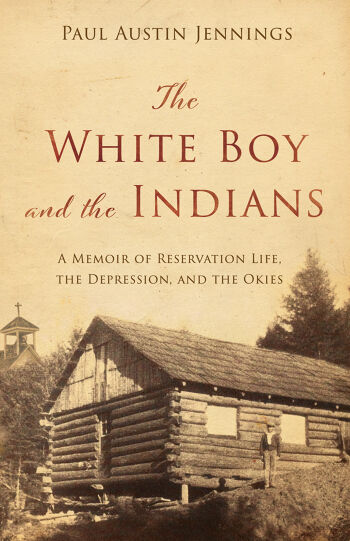
Assessment:
Plot/Idea: Jennings recounts his childhood years, growing up in the 1930s and ‘40s in California. The fourth of five children born to missionary parents, Jennings shares his experience of frontier life, parceling out entertaining stories of his early upbringing alongside the cultural insights he gleaned living near the Hupa, Karuk, and Yurok indigenous tribes. He delves into the Depression years of his childhood as well, allowing readers a glimpse of the windswept, gaunt days his family spent in the Central Valley of California after 1935.
Prose: The prose is simple but effective as Jennings warmly invites readers into his past, recounting stories in a fireside chat style that drives home the intimacy of his writing.
Originality: Jennings’s perspective is unique, particularly as he shares growing up “the only white boy in a one-room Indian school”; though he is obviously fond of his time spent with indigenous tribes, readers may wish for more perspectives from the indigenous people Jennings grew close to.
Character/Execution: Jennings spins engaging recollections that will draw readers in; his memories of the Depression years are engrossing, as is his early impression of World War II and youthful fascination with the United States’ warplanes. Throughout, he offers interesting reminiscence on the day-to-day aspects of living in a bygone era.
Date Submitted: October 17, 2023

The book begins with a helpful narrative setting the scene for readers, with companion maps as he lays out the geography of the community and the unspoiled lands around their rudimentary home. The prose is conversational and comforting in its delivery and tone. Aside from the compelling story, the memoir could almost serve as a handbook for homesteaders with its plain-spoken facts, such as defining a “rick of wood,” explaining the finer points of washboard usage, and celebrating the process of building a cabin from “30 or 40 trees.”
The theme of overcoming adversity and finding common ground with your neighbor are persistent. Jennings takes note of one Okie classmate in particular who prepared lunch for his siblings at school each day with bread and lard “without fanfare or excitement.” His respect for this boy and others, their work ethic and humbleness, is evident. Patriotism and religious pride shines brightly throughout the chapters, where Jennings reflects on small moments with classmates and teachers and acknowledges the blessings of both his church and country. Because there is no hiding of differences or struggles, Jennings’ memoir stirs a fast and enduring connection.
Takeaway: Warm, positive memoir of growing up on a Hoopa Reservation in the Great Depression.
Comparable Titles: Mary Ellicott Arnold and Mabel Reed’s In the Land of the Grasshopper Song, David Rains Wallace’s The Klamath Knot.
Production grades
Cover: A-
Design and typography: A
Illustrations: A
Editing: A-
Marketing copy: A-


